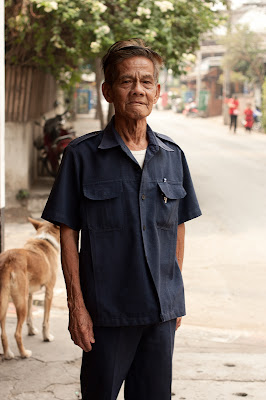As a response to an online discussion forum set up by the university concerning the controversial work of Philip-Lorca diCorcia in his project "Heads", I wrote the statement shown below -
"On the whole, when taking photos in a crowd or on the street, I do, 90% of the time, tend to ask people's permission before I take their image, however daunting that may be. This is obviously the more ethical option, and I know if I was having my photo taken by a stranger, I'd certainly like to be aware of it, and to know what it was being used for.
Of course, having said this, by not telling those you are photographing I feel you can capture the subject's subconscious emotion; the expression on their face would reveal far more about that person than the forced smile or pose they would adopt when a camera was directly pointed at them.
As several of my fellow students have said, I think a more ethical way around this issue is to approach the subject after the photo has been shot and show it to them, explaining the reasons for your shooting, the intended use of the image, etc. That way the person is still able to have their say & give permission.
However, this too has it's problems. If you are shooting, for example, using film or in a busy, bustling area, it would be impossible to talk to each of your subjects, or show them their image.
I think this is going to forever be one of photography's many unresolved issues."









